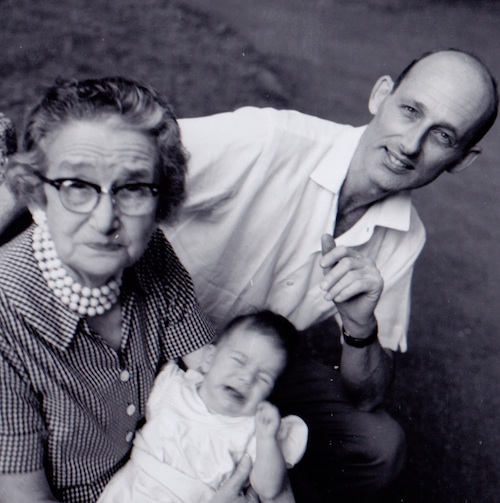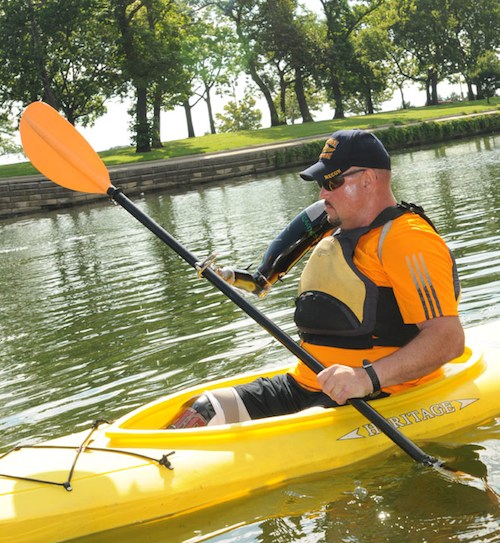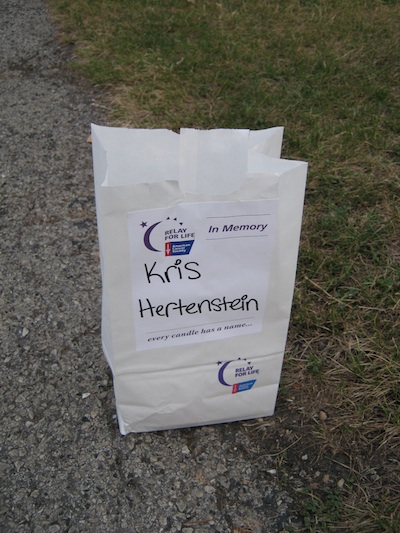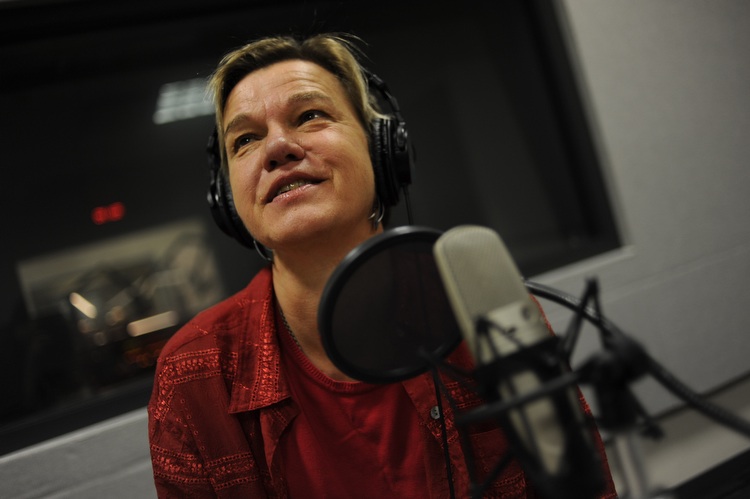All typewritten, single-spaced, to the edge of the page
August 8, 2012 • 24 Comments • Posted in memoir writing, UncategorizedThe seniors in my memoir classes have clever ways of letting me know when they disapprove of a writing topic. Wanda groaned when I assigned “in-laws,” and she returned the next week with a colorful essay about a second cousin once removed who’d spent much of his adult life in and out of prison. I could hear her mischievous grin as she finished reading her essay, plopped her paper on the table and declared, “he was an outlaw!” Janie wasn’t crazy about the topic, either. She came back with a piece she wrote about her decision to forego law school after college. She did not end up, ahem, in law.

Myrna’s mother-in-law Hedwig is on the left. That’s Henry, Hedwig’s son and Myrna’s husband, on the right. And that’s baby Elizabeth being held by Hedwig. Taken in 1962.
Myrna Knepler was one of the very, very, few students who opted to use the assignment to write about her mother-in law.
Myrna’s Husband Henry was only 16 when he said goodbye to his mother and father in Vienna and boarded the Kindertransport (children’s transport), the effort that saved 10,000 Jewish children from the Holocaust. Henry’s father died in the Auschwitz concentration camp. His mother — Hedwig — survived by hiding In an unheated cabin in the Vienna woods, owned by an anti-Nazi family who sheltered her there. Hedwig would not reunite with Henry, her only child, until he was 24 years old.
Myrna would get to know Hedwig Knepler a decade later, after marrying Henry. From Myrna’s essay:
Although she had proved both mental and physical sturdiness, she was thin and bent in a way that made her seem fragile and untouchable. Certainly her life experience was beyond anything I knew, in some ways so terrible I was afraid to touch it.
Moreover, I sensed the tension between her and my husband, her son. I, his new, much younger wife, wanted above all to please him. He loved his mother, but was troubled by what seemed to be her almost obsessive concern for him, a concern more appropriate to the mother of a young boy, than to a balding assistant professor in his late thirties.
Myrna wrote that her conversations with her mother-in-law were awkward until Myrna and Henry had their first daughter, Elizabeth.
Then for the six months between Liz’s birth and Hedwig’s death, talk was easier, focused on our mutual love for and wonder at this new creature, the grandchild she never expected to have.
Hedwig died in 1962, leaving Myrna and Henry to sort through a box of letters Hedwig and Henry had exchanged before and after the war. The letters were written in German (a language Myrna does not know well) and stored in their attic for years. The only time Myrna and her husband Henry opened the cardboard box together, they closed it up right away and put it back on the shelf. The material inside was too painful for Henry to read.
Henry died in 1999, and before his death, when he was too ill to deal with the letters himself, Myrna realized that they were now her responsibility. She unpacked nearly one thousand pages of letters — all typed single-spaced and to the edge of the page — and started sorting them by date to donate to the United States Holocaust Memorial Museum in Washington, D.C. In exchange, the museum would translate and make copies for Myrna and her daughters.
The translated letters trickled back to Myrna over a span of six years, and after reading them all Myrna was able to piece together stories of how her mother-in-law helped a brother immigrate safely to Argentina. She read heartbreaking details of her mother-in-law’s attempts to help her mother and aunt, who were already interned. They did not survive. Myrna’s mother-in-law wrote about her own struggles to support herself. About how she starved. How she helped save others. About how, in the end, some of the people she saved ended up helping her.
The original letters Myrna’s mother-in-law exchanged with Myrna’s husband are now preserved in a vault outside of Washington, D.C., where scholars can access them. Myrna ended her essay about the letters with a question. “Could I ever be as brave, as self reliant, as helpful to others as she was?” I would say yes, Myrna, you could. I just hope you are never, ever put to the test the way your mother-in-law was.



